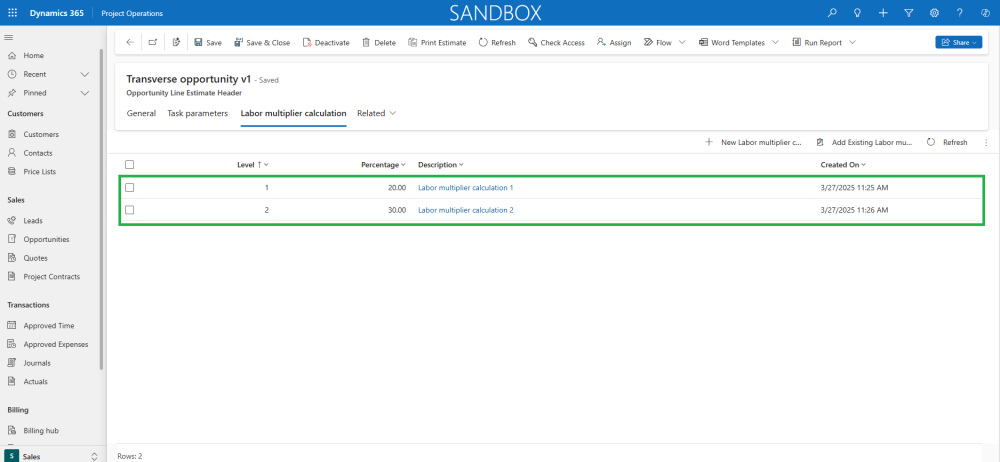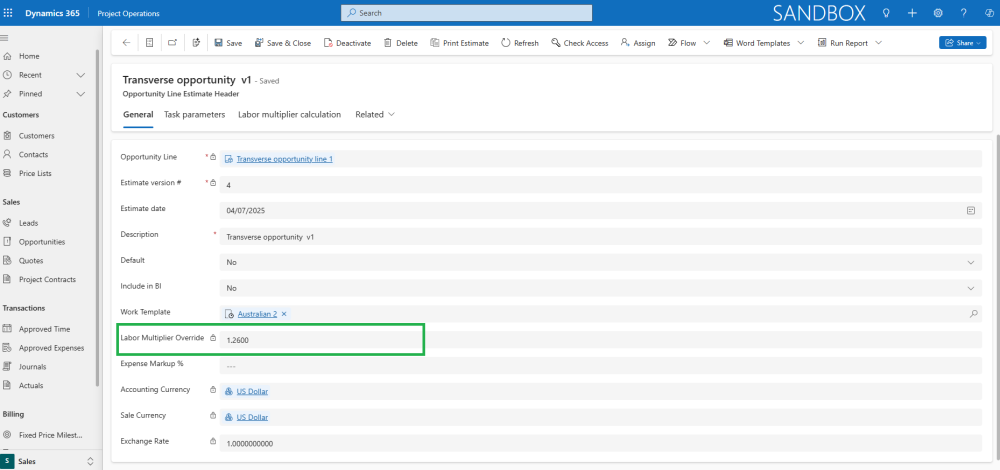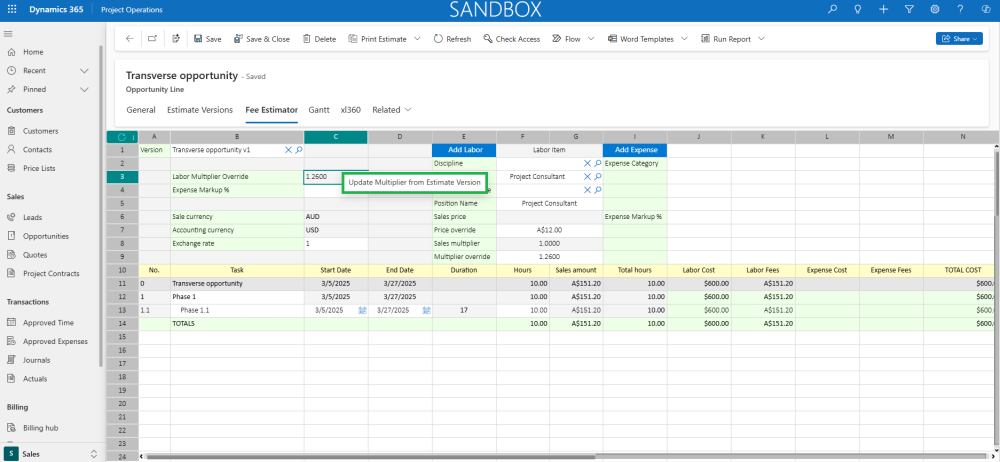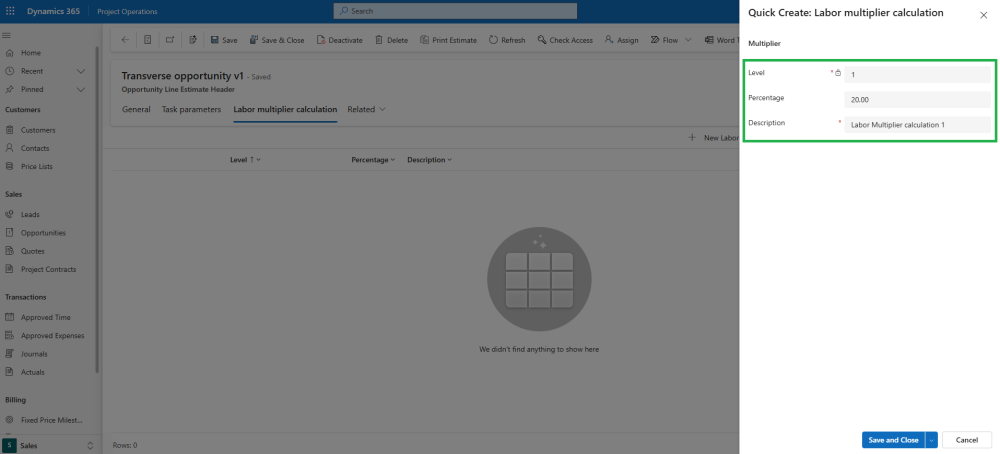A ‘Labor Multiplier Calculation’ grid allows users to create and manage up to 10 compounded percentage levels to calculate the total multiplier for a specific Fee Estimate version.
- The consolidated multiplier value is automatically rolled up as the ‘Labor multiplier override’ field of the estimate version.
- An “Update Multiplier from Estimate Version” contextual menu option is available in the Labor Multiplier Override cell within the Fee Estimator spreadsheet. This option allows users to update or reset the cell’s value based on the Labor multiplier Override field from the associated Opportunity Line Estimate Header record.
Labor Multiplier Calculation for Fee estimate version
- Users can easily create labor multiplier calculations by opening the fee estimate version within the opportunity line. By entering values in certain fields—such as the percentage and description—they can automatically generate different levels of labor multiplier calculations.
- The formula for calculating the Labor Multiplier Override field in the estimate version is based on summing the multipliers defined at various levels and then adding this total to the base value, which is always set to 1.
- In labor multiplier calculations, the multiplier for each level is determined using the following formula: Multiplier at Level N = (Sum of multipliers from Level 1 to Level N-1) × (Percentage defined at Level N). For example, the multiplier at Level 3 is calculated as: Multiplier at Level 3 = (Multiplier at Level 1 + Multiplier at Level 2) × Percentage at Level 3.
- The Labor Multiplier Override field in the estimate version is automatically updated and becomes non-editable whenever a Labor Multiplier Calculation is created, updated, or deleted. This field remains editable when no Labor Multiplier Calculation is defined.
Impact on Labor Multiplier Calculation when copying or duplicating estimate versions
When copying or duplicating a fee estimate version, the Labor Multiplier Calculation and Labor Multiplier Override fields are impacted based on the following possible scenarios:
- If a Labor Multiplier Calculation already exists in the new estimate version, the ‘Labor Multiplier Override’ value from the original version is not copied over. Additionally, no Labor Multiplier Calculation records from the original estimate version are transferred to the new version.
- If no Labor Multiplier Calculation exists in the new estimate version, but one exists in the source estimate version, then both the ‘Labor Multiplier Override’ value and the associated Labor Multiplier Calculation records are copied and created or updated in the new estimate version.
- If a Labor Multiplier Override value is manually defined in the source estimate version, it will be copied and applied to the new estimate version.






